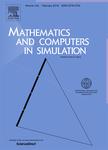版权所有:内蒙古大学图书馆 技术提供:维普资讯• 智图
内蒙古自治区呼和浩特市赛罕区大学西街235号 邮编: 010021

作者机构:Southeast Univ Sch Automat Nanjing 210096 Jiangsu Peoples R China Anhui Univ Technol Sch Management Sci & Engn Maanshan 243032 Peoples R China Southeast Univ Sch Math Nanjing 210096 Jiangsu Peoples R China Harbin Inst Technol Sch Comp Sci & Technol Harbin 150001 Heilongjiang Peoples R China Southeast Univ Intelligent Transportat Syst Res Ctr Nanjing 210096 Jiangsu Peoples R China
出 版 物:《MATHEMATICS AND COMPUTERS IN SIMULATION》 (系统模拟中的数学与计算机)
年 卷 期:2019年第155卷
页 面:105-114页
核心收录:
学科分类:07[理学] 070104[理学-应用数学] 0835[工学-软件工程] 0701[理学-数学] 0812[工学-计算机科学与技术(可授工学、理学学位)]
基 金:National Natural Science Foundation of China [61573096, 61272530] Natural Science Foundation of Education Department of Anhui province [KJ2016A087]
主 题:Explicit Model Predictive Control Signal split Traffic network Intelligent transportation system
摘 要:As a consequence of the rapid growth of vehicles in cities, urban traffic congestion has become more and more serious nowadays. As an effective control approach, Model Predictive Control (MPC) has been deeply studied for transportation management. However, the relatively complex on-line computing hinders MPC from being further applied on transportation system, especially for large scale transportation networks. Based on the refined store-and-forward model, we propose a signal split control approach with Explicit Model Predictive Control (EMPC) in this paper, by which the complexity of online optimization can be significantly reduced. With multi-parametric Quadratic Program (mp-QP), our approach can generate explicit signal control law, and then shifts the former repeated online signal split optimization offline. As a result, the real time signal control becomes an easier task by searching the lookup table corresponding to the transportation state. The simulation experiments demonstrate that our EMPC based approach outperforms the traditional fix-time signal control. Meanwhile, compared with traditional MPC based approach, our approach can decrease the total computation complexity, and then increase the applicability for real transportation system. (C) 2017 International Association for Mathematics and Computers in Simulation (IMACS). Published by Elsevier B.V. All rights reserved.